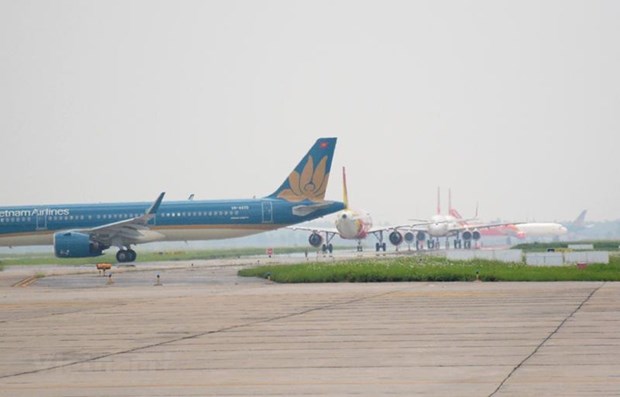 Society
Society

 |
| Nội Bài International Airport. — VNA/VNS Photo |
HÀ NỘI — Nội Bài International Airport has received written approval from the Civil Aviation Authority of Việt Nam under the Ministry of Transport to continue testing and implementing the second model of Airport Collaborative Decision Making (A-CDM) for an extended period of three months, starting from July 25.
The A-CDM testing will be conducted in two phases. In phase one, A-CDM will be applied continuously for eight hours per day, from 8am to 4pm, spanning from July 25 to August 31.
In phase two, A-CDM will be implemented 12 hours a day, from 8am to 8pm, covering the period from September 1 to October 31.
During the testing phase (from March 26 to April 30), more than 3,000 flights operated safely within the designated time frame. The leaders of Nội Bài International Airport reported that the system achieved an average compliance rate of 98 per cent with regard to the departure target position and the authorised start-up time according to the air traffic authority's departure sequence. The flight crew's clearance requests were also strictly and accurately followed.
In terms of specific measures to enhance efficiency, Nội Bài International Airport representatives emphasised that all involved parties must adhere strictly to the process, from the time the airport receives flight plans from airlines until the aircraft safely takes off.
Airlines are required to submit flight plans to the airport before 10am each day. If there are any changes, the updated plans must be sent back before 6pm on the same day. The window for determining flight delays has been tightened, allowing a maximum of 60 minutes, and airlines must promptly notify passengers of any delays through appropriate channels. If a delay exceeds 60 minutes, a new flight plan must be issued.
Furthermore, the A-CDM testing showed promising results in terms of reduced taxiing and turnaround times. The aircraft's roll-out time for take-off at the airport decreased to 13 minutes during the testing phase, which was three minutes less than the average in 2022 before the implementation of A-CDM.
The average taxi-in time from actual landing on the runway to reaching the stand was reduced to seven minutes, a one-minute improvement from the pre-test average.
The benefits of A-CDM extend to cost savings as well. Preliminary calculations by domestic airlines indicate that every minute saved in taxiing time translates to fuel savings and cost reduction. For example, for an A350, each minute of reduced taxiing time can save approximately 25kg of fuel, equivalent to about US$127. Similarly, for a B787 aircraft, a minute of reduced taxiing time can save around 20kg of fuel, amounting to about $122. The A321 and ATR72 aircraft can save about 13.5kg and $19 per minute of reduced taxiing time, respectively.
In conclusion, implementing A-CDM not only benefits passengers with improved travel experiences but also contributes to cost savings and more efficient flight operations, including the handling of luggage and cargo services.
The thorough testing and extended evaluation period at Nội Bài International Airport will help assess the system's effectiveness in various scenarios, leading to further refinements and enhancements for the benefit of all stakeholders. — VNS




